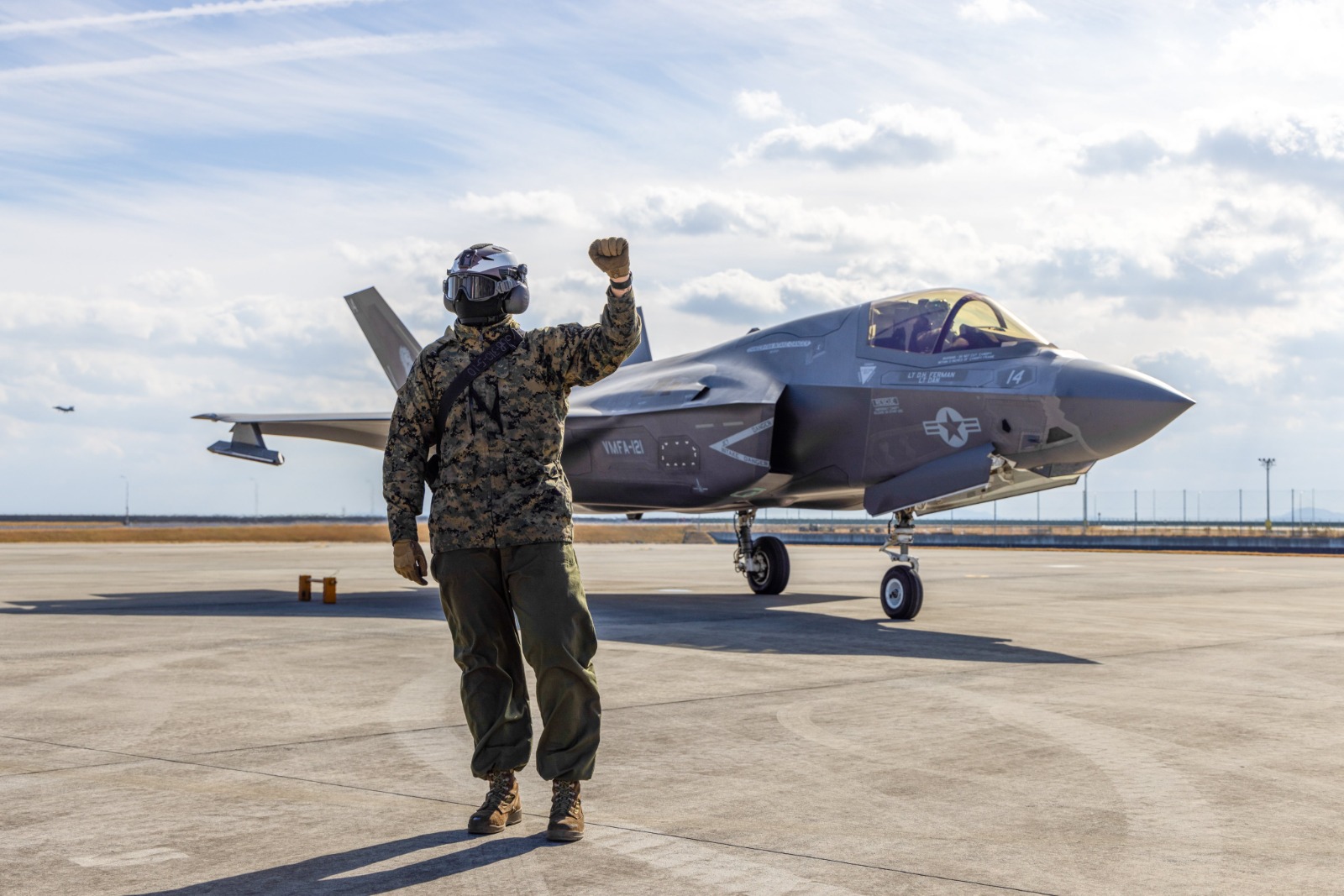In a significant development, F-35B stealth fighters from the US Marine Corps have recently made their inaugural landing at the Japan Air Self-Defense Force’s Nyutabaru Base in Shintomi Town.
Not Enough F-35s With The US To Fight A War; Lockheed Faces Huge Task Of Supplying Upgraded Jets
This event marks the first-ever presence of F-35Bs at Nyutabaru Base, signaling a new phase in joint training efforts between Japan and the United States.
The F-35B, recognized for its advanced stealth technology and distinctive ability for short takeoffs and vertical landings, arrived as part of the ongoing joint training program between the two nations.
According to the Japan-based NHK News, two aircraft from Iwakuni Air Base touched down at Nyutabaru Air Base at approximately 10:30 a.m. on December 12, drawing the attention of spectators, including enthusiasts and residents.
Joint training sessions between Japan and the United States will continue until the 20th of this month.
These exercises, occurring in the airspace off Shikoku and west of Kyushu, with Nyutabaru Air Base as the central hub, underscore the commitment of both nations to enhancing their defense capabilities and promoting collaboration in response to changing geopolitical dynamics.
Japan’s Ministry of Defense has set ambitious plans for the F35B, intending to procure 42 aircraft. The initial deployment strategy involves stationing the first six aircraft at Nyutabaru Base by the end of the next fiscal year, underscoring the strategic importance of this location.
Nyutabaru is considered the most suitable location due to its proximity to Marine Corps Air Station Iwakuni (MCAS Iwakuni), facilitating joint training with US Marine Corps F-35Bs.
It is strategically situated near the Japan Maritime Self-Defense Force (JMSDF) naval base in Kure, which houses one of the Izumo-class destroyers.
The future deployment of the F-35B, combined with its intended integration into the Japan Maritime Self-Defense Force (JMSDF) Izumo-class destroyers, is a crucial component in Japan’s defense strategy for protecting its remote islands from potential foreign threats.
China’s increasing military capabilities notably contributed to the plans to acquire and deploy the F-35B, highlighting the nation’s effort to bolster its defense capabilities in the face of evolving geopolitical challenges.
Modeled On US B-2 Spirit, India Joins Elite Group Of Nations With Indigenous, Hi-Speed, Flying-Wing UAV
Japan, US Forces Conduct Bilateral Training
In addition to concerns regarding China, Tokyo is apprehensive about Russia’s expanding presence near its aerial and maritime borders.
Notably, on December 14, the air forces of China and Russia conducted a joint aerial patrol over the Sea of Japan and the East China Sea.
The Japanese defense ministry reported the sighting of aircraft, including China’s H-6, J-16, Y-8, and Russia’s Tu-95 and Su-35, flying towards the East China Sea through the channel between Japan and South Korea.
In response to this incident, the Japanese Air Self-Defense Force scrambled fighter jets, as confirmed by the ministry.
Meanwhile, on the same day, US Forces and the Japan Air Self-Defense Force (JASDF) engaged in bilateral training over the Sea of Japan.
U.S. Forces & the JASDF conducted a bilateral training over the Sea of Japan to enhance deterrence & response capabilities of the alliance. The flight was comprised of: @JASDF_PAO_ENG F-35s; @usairforce F-16s, KC-135s; @USNavy EA-18G's. pic.twitter.com/daRgSrLz0u
— PACAF (@PACAF) December 15, 2023
According to the Japanese Defense Ministry, the joint flight involved the participation of various units, including the Japan Air Self-Defense Force (JASDF), contributing 4 F-35As from the 3rd Air Wing in Misawa and the Northern Aircraft Control and Warning Wing, also based in Misawa.
The US Air Force played a substantial role with 7 F-16s and 1 KC-135, while the US Navy contributed 2 EA-18Gs to the collaborative training mission.
The ministry said, “The Japan Air Self-Defense Force (JASDF) and the US Force conducted bilateral training to enhance deterrence and response capabilities of the Japan-US Alliance.”
Furthermore, the US has actively pursued the integration of the US-Japan alliance and the US-South Korea alliance into a unified US-Japan-South Korea alliance.
Notably, in October, the three nations conducted their inaugural trilateral aerial exercise, marking a remarkably swift advancement in expanding defense cooperation in the face of shared security challenges.

The historic exercise marked a significant milestone as the first-ever joint escort mission, featuring South Korean and Japanese fighter aircraft alongside a US nuclear weapons-capable B-52 bomber over the Sea of Japan.
Previously, such flights followed a sequential rather than joint approach. Japanese aircraft would escort U.S. bombers up to a specified point before transferring the escort responsibility to South Korean fighters and vice versa.
The collaboration exemplifies the commitment to regional security and underscores the growing synergy among these key allies.
- Contact the author at ashishmichel(at)gmail.com
- Follow EurAsian Times on Google News